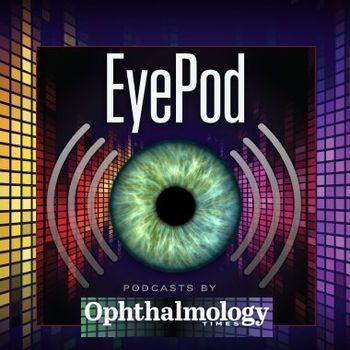
Two stents safe, effective
If one trabecular bypass stent is good for reducing IOP, are two stents better? The answer could be yes, at least for a first-generation device (iStent, Glaukos). Data presented showed that microinvasive glaucoma surgery (MIGS) to implant two trabecular micro-bypass stents is safe and effective after 1 year of follow-up.
San Francisco-If one trabecular bypass stent is good for reducing IOP, are two stents better? The answer could be yes, at least for a first-generation device (iStent, Glaukos). Data presented showed that microinvasive glaucoma surgery (MIGS) to implant two trabecular micro-bypass stents is safe and effective after 1 year of follow-up.
“The results were very good and were independent of phaco in these patients,” said David Chang, MD, clinical professor of ophthalmology at the University of California, San Francisco and Altos Eye Physicians, Los Altos, CA.
Surgeons implanted two stents in 40 patients with phakic or pseudophakic eyes who had open-angle glaucoma that was not controlled on one ocular hypotensive medication. Patients had a C/D ratio of 0.95 or less and medicated IOPs of between 18 and 30 mm Hg. After medication washout, the patients had IOP between 22 and 38 mm Hg.
After implantation, the patients were given ocular hypotensive medication if IOP exceeded 21 mm Hg. The efficacy endpoints of the study were unmedicated IOP reduction of 20% or greater, an unmedicated IOP of 18 mm Hg or less, and mean change in IOP. Safety assessment included a fundus exam and optic nerve evaluation, slit lamp findings, best-corrected visual acuity, and complications/adverse events over 2 years.
The overall results were positive, Dr. Chang said. The mean medication preoperative IOP was 20.7 mm Hg and the unmedicated baseline IOP was 24.2 mm Hg.
A total of 28 patients have been followed for 12 months. Mean IOP fell to 14 mm Hg at 1 month after implantation, 13.8 mm Hg at 3 months, 13.4 mm Hg at 6 months, and 13.6 mm Hg at 12 months. At 12 months, 25 of the 28 patients were not taking any ocular hypertensive agents, two patients were taking one medication, and one patient was taking two medications.
The only significant adverse event was a single minor hyphema in one patient that appeared 1 week after surgery. The hyphema resolved within 1 month without any medical intervention, Dr. Chang noted.
“We found that MIGS to implant two trabecular stents in this series of patients resulted in significant reductions in IOP to 14 mm Hg or less out to 12 months,” he said. “We saw significant reductions in medication use and a very favorable safety profile.”
For more articles in this issue of Ophthalmology Times Conference Brief,
Newsletter
Don’t miss out—get Ophthalmology Times updates on the latest clinical advancements and expert interviews, straight to your inbox.













































